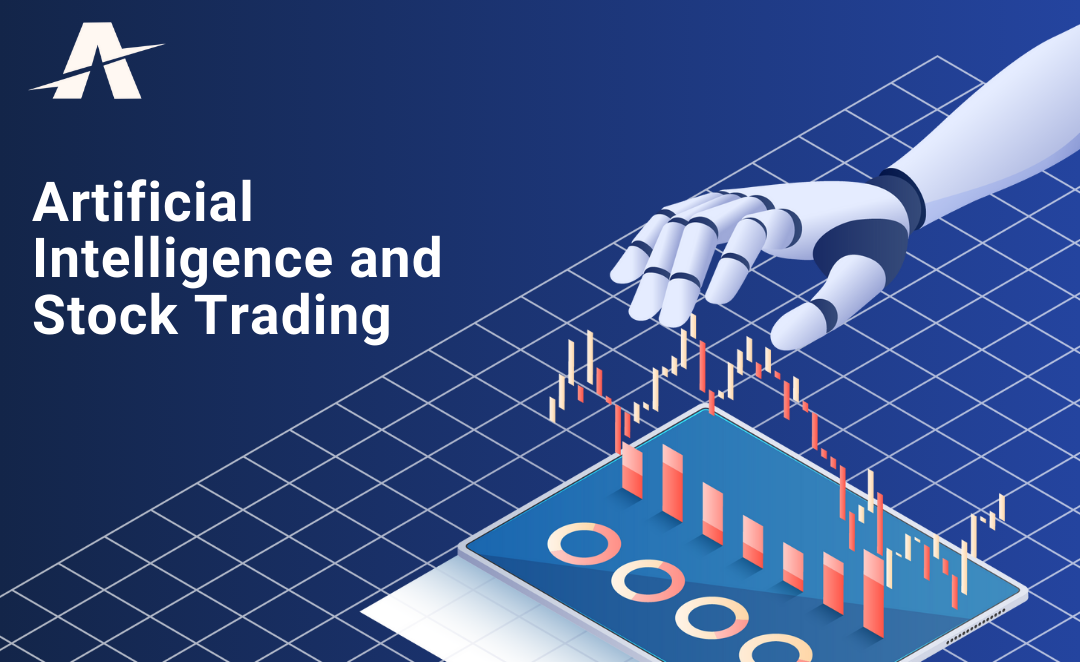20 Handy Facts For Choosing Stock Analysis Tool Sites
20 Handy Facts For Choosing Stock Analysis Tool Sites
Blog Article
Top 10 Tips For Evaluating The Market Coverage Of Ai Trading Platforms For Predicting Stocks
When looking at AI trading platforms that can predict or analyze the market, coverage of the stock is an important factor to consider. It determines which assets and markets are accessible. A platform that has extensive market coverage will allow you to diversify your portfolio, discover possibilities across the globe, and to adapt to a variety of trading strategies. Here are 10 best strategies to help you assess the market coverage provided by these platforms.
1. Evaluate Supported Asset Classes
Stocks - Ensure you have access to the major stock exchanges such as NYSE and NASDAQ. Additionally, make sure that your platform offers small-caps as well as mid-caps.
ETFs: Verify that the platform provides a variety of ETFs to give you a variety of exposure to different sectors, themes, and regions.
Options and futures. Make sure the platform is able to handle derivatives, such as options, futures, and other leveraged instruments.
The commodities and forex. See whether there are any forex pairings that are available, in addition to precious metals, energy commodities, and other agricultural commodities.
Cryptocurrencies. Find out if they support the major altcoins and cryptocurrencies (e.g. Bitcoin, Ethereum).
2. Make sure you check the area of coverage
Global markets - Check that the platform has the capacity to cover all major markets across the globe including North America (including copyright), Europe, Asia-Pacific markets as well as emerging ones.
Focus on regional markets: Find out if a platform is focused on specific particular markets or regions which are in line with your trading goals.
Local exchanges: Make sure you know whether the platform supports local or regional exchanges relevant to your specific location or plan.
3. Assessment Real-time against. Delayed Data
Real-time Market Data: The platform must provide real-time trading data to allow for rapid decision-making.
Delayed data: Discover whether you are able to get delayed data for free, or at a lower cost. This may be enough for investors who are looking to invest long-term.
Latency of data. Examine whether the platform reduces the delay for feeds of information that are real-time, especially in the case of high-frequency trading.
4. Evaluation of Data from the Past
In depth and breadth of historical data: Make sure that the platform has ample historical data (e.g. for at least 10 years) for backtesting.
Find out the precision in historical data.
Corporate actions: Check if historical data accounts for stock splits, dividends, and other corporate actions.
5. Make sure to check the market depth and place an order Books
Level 2 data: Make sure that the platform has Level 2 information (order book depth) for improved price search and execution.
Check for real-time bidding and spreads of asking. This will ensure that pricing is accurate.
Volume data: Check if the platform includes extensive volume data that can be used to analyze liquidity and market activity.
6. Examine Coverage to determine Indices and Sectors
Major indices: Ensure that the platform has important benchmarking indices, index-based strategies and other purposes (e.g. S&P 500, NASDAQ 100, FTSE 100).
Data specific to a sector: For targeted analysis, make sure the platform has information on a specific industry (e.g. technology, healthcare or energy).
Custom indices. Check if the platform is capable of creating and tracking custom indices according to your requirements.
7. Examine the integration with Sentiment and News Data
News feeds - Ensure that the platform integrates real-time news feeds for market-moving news from trusted (e.g. Bloomberg or Reuters) sources.
Sentiment analysis Find out whether your platform offers sentiment analysis tools that use information from social media, news sources, or another source of data.
Event-driven strategy: Make sure that the platform is compatible with events-driven trading strategies (e.g. announcements of earnings economic reports, announcements of earnings).
8. Make sure you are aware of Multi Market Trading Capabilities
Cross-market Trading: Make sure that the platform you are using allows you to trade across multiple markets and asset classes from an unifying interface.
Conversion of currencies: Find out if the platform supports multi-currency as well as automated conversion of currencies to facilitate international trading.
Check for support of time zones.
9. Assess Coverage of Alternative Data Sources
Look for other data sources.
ESG data. Verify whether the platform contains socio-economic, environmental and governance data to support socially accountable investing.
Macroeconomic data: Ensure that the platform has macroeconomic indicators (e.g., inflation, GDP, interest rates) for analysis of fundamentals.
Review customer feedback and market Reputation
User feedback is a fantastic method of evaluating the market coverage of a platform.
Check the reputation of the platform in relation to its coverage or awards for industry.
Case studies: Look for case studies or testimonials that showcase the platform's effectiveness in certain markets or asset classes.
Bonus Tips
Trial time: You may make use of an demo, trial or a free trial to test the coverage of markets as well as data quality.
API access - Verify whether the API can be used to access information on the market in a programmatic manner.
Support for customers. Check that the platform will provide assistance in relation to data or market inquiries.
These suggestions will allow you assess the market coverage provided by AI trading platforms that forecast or analyze the prices of stocks. So you'll have the ability select the one that gives you the information and markets you need for successful trading. Market coverage that is comprehensive allows investors to diversify their portfolios, explore new possibilities, and adjust to market conditions that change. Have a look at the recommended click this link about ai for investing for blog tips including ai hedge fund outperforms market, getstocks ai, trader ai intal, ai trade, chatgpt copyright, stock ai, stock market software, trading with ai, incite ai, ai stock prediction and more.
Top 10 Tips For Evaluating The Social And Community Features Of Ai Stock Prediction/Analyzing Trading Platforms
To know how users learn, interact, and share their knowledge in a community It's crucial to look at the social and community-based features of AI trade and stock prediction platforms. These features are a fantastic method to improve user experience, as well as provide valuable support. Here are 10 top suggestions for assessing the social and community aspects of these platforms.
1. Active User Community
Tips: Ensure that the platform is actively used and is regularly participating in discussion, sharing insights, or providing feedback.
Why? A community that is active indicates an ecosystem which allows its members to grow and learn with one another.
2. Discussion forums and boards
You can assess the effectiveness of a discussion forum or message board by looking at the activity levels.
Forums allow users to discuss market trends or ask questions, and also discuss strategies.
3. Social Media Integration
Tips: Make sure the platform is integrated with social media channels to share insights and updates (e.g. Twitter, LinkedIn).
What is the reason? Social media can be used to increase engagement and provide current market information in real time.
4. User-Generated content
Find features that allow users to share, create, and modify content.
The reason: User-generated content promotes the spirit of collaboration and gives diverse perspectives.
5. Expert Contributions
Tip - Check whether the platform is populated with contributions from experts in the industry, such as market analysts or AI specialists.
Why? Expert insight adds authenticity and depth to discussions in the community.
6. Chat in real time and messaging
Tip: Check whether users can communicate with one another instantly using chat or real-time messaging.
Real-time interactions allow for rapid exchange of information and collaboration.
7. Community Moderation & Support
Tip: Assess the level of support and moderation within the community (e.g. moderators, moderators, customer service representatives).
Reason: Effective moderation helps to ensure a positive and respectful environment, while support helps resolve user issues promptly.
8. Webinars and Events
TIP: Make sure the platform hosts live Q&As hosted by experts, or webinars.
The reason: These events provide an excellent opportunity to gain knowledge and meet directly with professionals from the industry.
9. User Review and Commentaries
Find platforms that allow users post reviews or provide feedback about their community features and platforms.
Why? User feedback helps discover strengths within the community ecosystem and areas of improvement.
10. Gamification and Rewards
Tips: Find out whether the platform has gaming elements, like badges or leaderboards.
Gamification can encourage users and community members to become more active.
Bonus Tip Tips for Privacy and Security
Make sure that all community or other social features have robust privacy and safety measures to safeguard users' information and other interactions.
These aspects will help you determine if a trading platform and AI stock prediction can provide a friendly and supportive community that can help you improve your knowledge of trading and enhance your experience. Follow the top my sources for blog tips including ai trade, trade ai, ai trading platform, best ai stock trading bot free, ai stock prediction, ai chart analysis, ai trade, best stock advisor, ai stock picks, best ai trading software and more.